Welcome to Doris Stoppacher's personal webpage
Personal research and project web page
Snapshot Binning Schemes of Cosmological Simulations
— —
Summary: We compare snapshot binning schemes of multiple cosmological simulation in order to explain the "dip" in the particle fractions of 256-Cholla .
Simulations
We compare the binning schemes of snapshot numbers and redshifts for various cosmological simulations such as Cholla 256-Cholla (Schneider & Robertson 2015, Villaseñor et al. 2020) and the 3840-VSMDPL (Klypin et al. 2016). In our post from 2021-09-13 we found that there are two pominent dips in the shared particle fractions of direct progenitor halos at \(z=1\) and \(z=2\) (see Figure 5).
Snapshot identification number vs. redshift
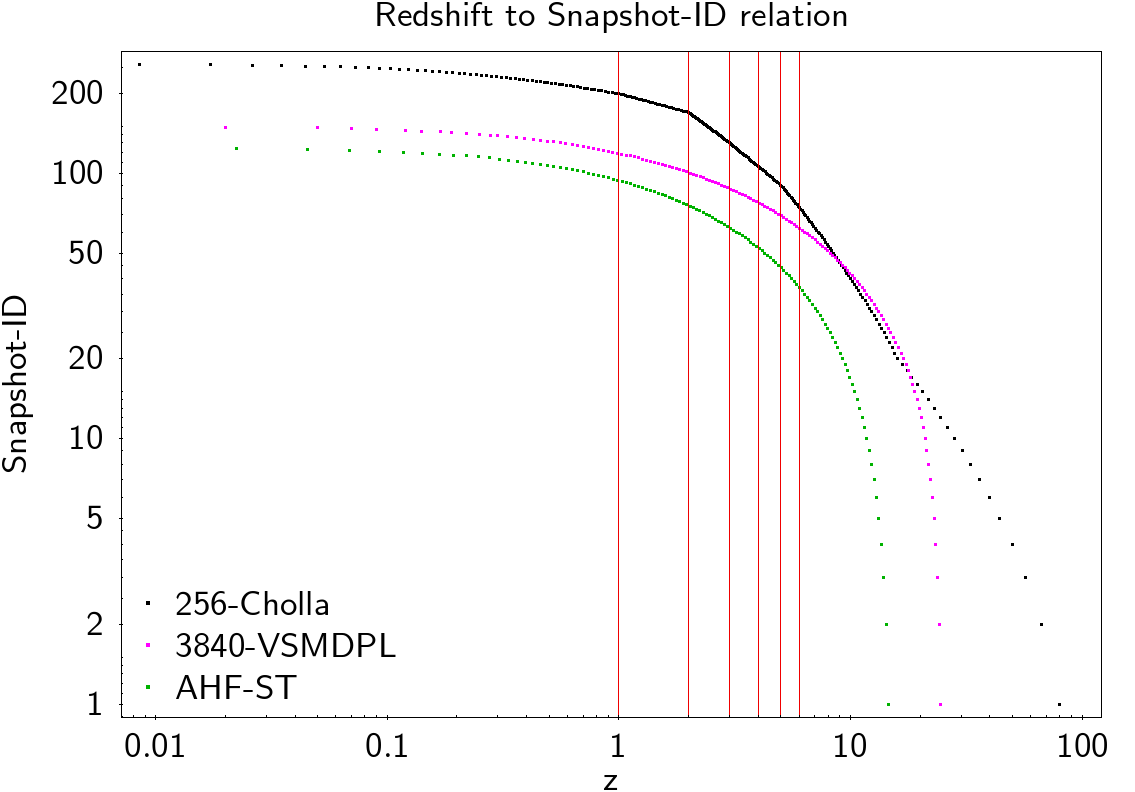
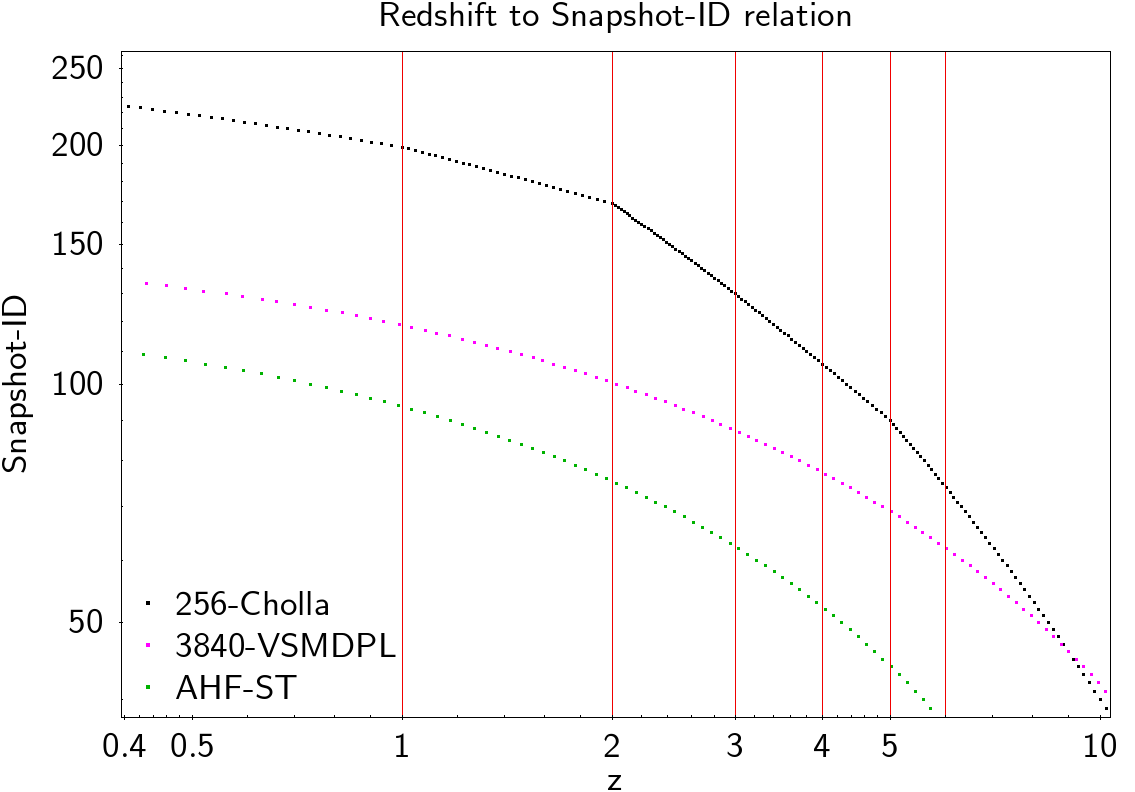
Does that affect the growth history of halo properties?
It seems that the halo masses \(M_{vir}\) (top), the maximum velocities \(V_{max}\) (middle), and certain radii (bottom panel of Figure 2) is not affected by the discontinuity, however it is not clear if the mass accrection history of the halo mass would as we saw in e.g. Figure 2 or Figure 4 in previous posts.
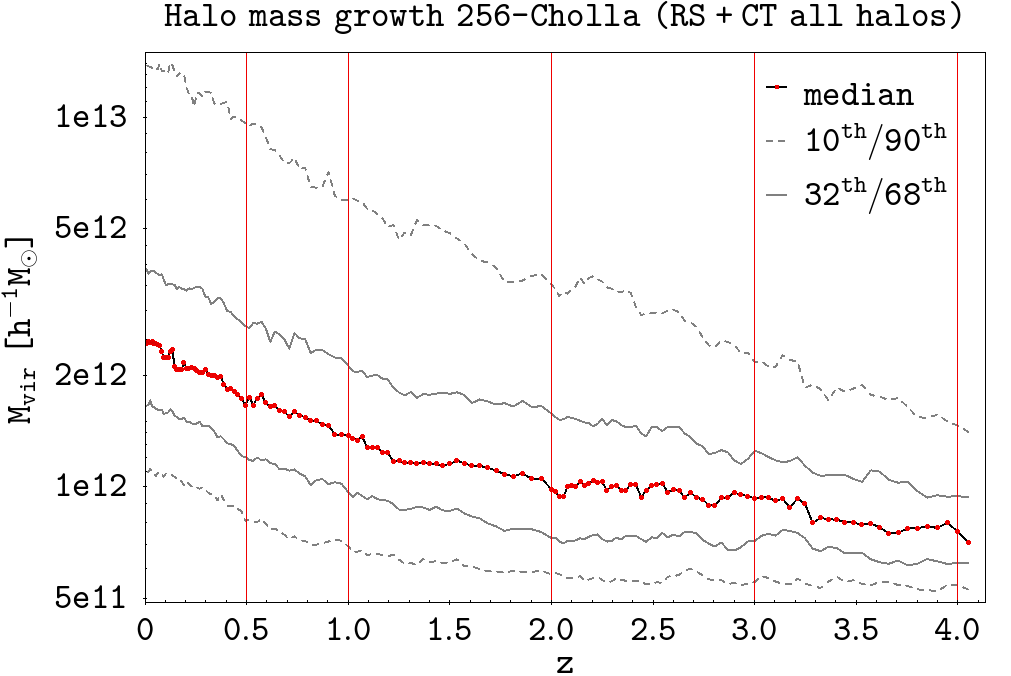
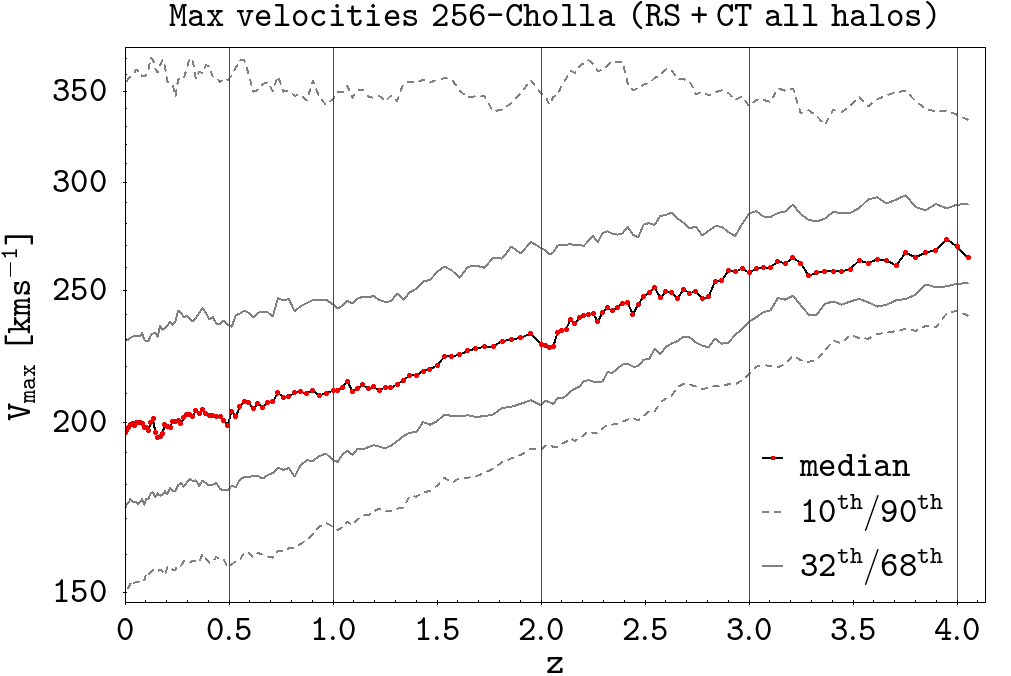
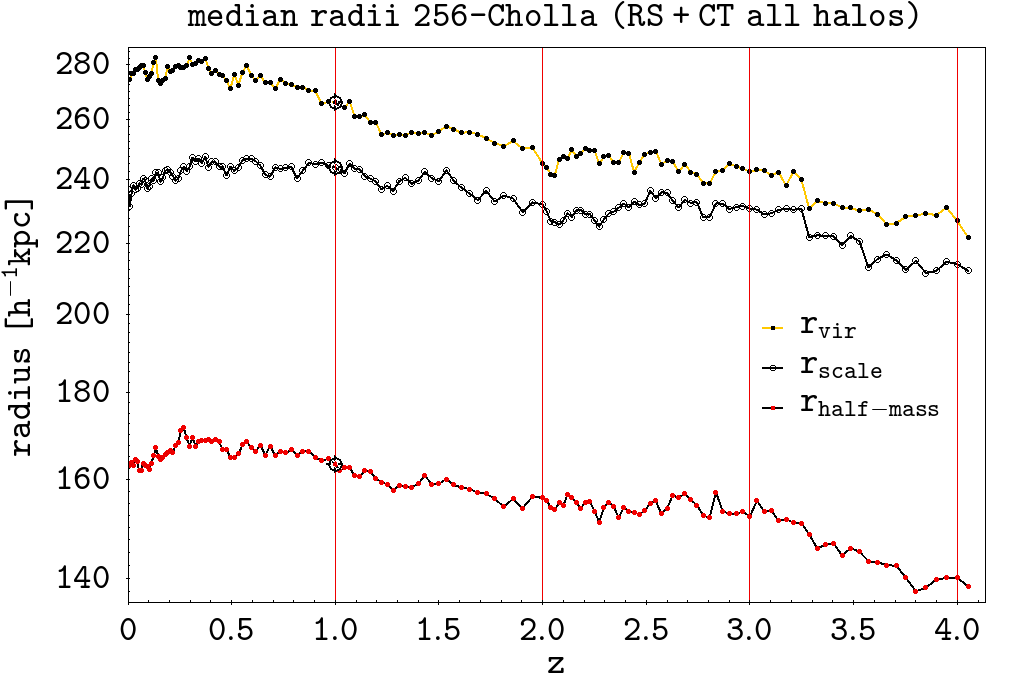
— —